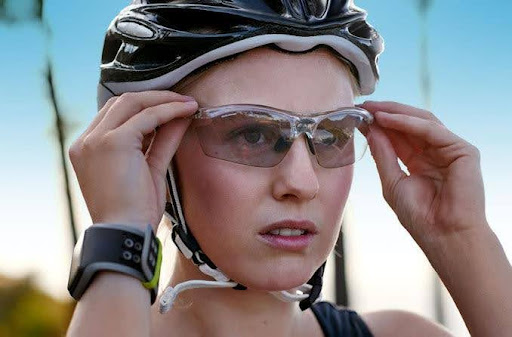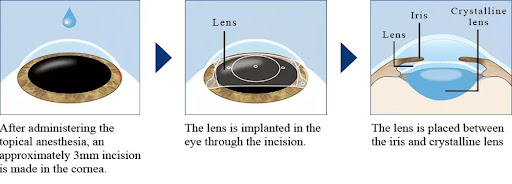In the realm of sports, where split-second decisions and precision are paramount, the importance of preventive eye care cannot be overstated. Athletes rely heavily on their vision to navigate the field, track, fast-moving objects, and maintain spatial awareness.
This comprehensive article—supported by insights from Eyeonce Eye Clinic—explores the nuances of sports-related eye health, shedding light on the crucial role that preventative measures play in sustaining optimal visual performance.
Common Eye Injuries in Sports
Understanding the potential risks of eye injuries in sports is crucial for athletes, coaches, and parents alike. Here are some common eye injuries:
- Corneal Abrasions – Scratches on the cornea, often caused by finger pokes or contact with foreign objects. In sports like basketball or wrestling, inadvertent pokes or contact with fingers can result in corneal abrasions.
- Blunt Trauma – Impact from balls, equipment, or collisions leading to contusions, fractures, or hemorrhages in the eye. High-velocity sports such as baseball, hockey, or racquet sports pose a risk of blunt trauma due to fast-moving objects.
- Chemical Burns – Exposure to sports-related chemicals, such as cleaning agents or sweat, causing severe eye irritation. In sports involving the use of chemicals, like swimming, accidental splashes can lead to chemical burns.
- Foreign Object Injuries – Dust, sand, or particles from the playing field, causing discomfort and potential damage if not promptly addressed. Outdoor sports like soccer or track and field may expose athletes to airborne particles that can cause foreign object injuries.
- Photokeratitis (Sunburned Eyes) – UV exposure from sunlight reflecting off snow or water, leading to painful inflammation of the cornea. Athletes engaging in snow or water sports, such as skiing or water polo, without UV protection, are at risk.
- Hyphema – Blood collecting in the front of the eye, often caused by a direct blow. Sports with a high risk of impact, such as boxing or basketball, can lead to Hyphema from direct blows to the eye.
- Orbital Fractures – Fractures in the bones surrounding the eye due to significant impact. Contact sports like rugby or martial arts increase the risk of orbital fractures from forceful impacts.
- Retinal Detachment – The separation of the retina from its underlying supportive tissue. High-impact sports or activities with rapid acceleration and deceleration, like skydiving or gymnastics, can pose a risk.
- Black Eye (Periorbital Hematoma) – Bruising around the eye caused by blood collecting in the space around the eye. Contact sports such as boxing or soccer can lead to black eyes from collisions with opponents or equipment.
- Conjunctival Lacerations – Cuts or tears in the conjunctiva (the clear tissue covering the white part of the eye). In sports with the potential for sharp objects, like fencing or baseball, conjunctival lacerations can occur from accidental contact.
Understanding the risks is the first step toward eye injury prevention. Eyeonce Eye Clinic—a well-renowned eye center in South Korea—emphasizes proactive measures and comprehensive eye examinations. By incorporating their expertise, athletes can make informed choices, ensuring a clearer vision and a safer playing experience.
Preventative Measures to Avoid Eye Injuries in Sports
Here are some essential preventative measures, enriched with insights from Eyeonce Eye Clinic and their experienced doctors, Dr. Paik Dong Won and Dr. Jung Sae Rom.
- Wear Appropriate Eyewear – Protective eyewear, such as goggles or helmets with face shields, is designed to shield your eyes from impact and foreign objects.
- Regular Eye Check-ups – Our ophthalmologists at Eyeonce Eye Clinic highlight that regular eye check-ups are not just for those with existing eye concerns. Scheduled eye examinations can detect and address potential issues early on. Anyone, especially athletes can benefit from proactive eye care to maintain optimal vision.
- Stay Hydrated – Proper hydration contributes to maintaining the tear film on the eye’s surface, reducing the risk of corneal abrasions.
- Educate Yourself on Sports-related Chemicals – Awareness of the chemicals in your sport and their potential effects on the eyes is crucial. Be cautious in environments with chemicals and wear the appropriate protective eyewear.
- Use UV Protection – UV exposure, especially in outdoor sports, can lead to photokeratitis and other eye issues. Dr. Paik Dong Won and Dr. Jung Sae Rom, highly recommend wearing UV-blocking sunglasses and hats during outdoor activities to shield the eyes from harmful rays.
- Adhere to Sport-Specific Safety Guidelines – Following the safety guidelines of your sport helps minimize the risk of blunt trauma and other injuries.
- Invest in Quality Gear – High-quality, well-fitted gear can provide superior protection against impact and injuries.
- Participate in Sports Vision Enhancement Programs – Specialized exercises can enhance visual skills, improving overall performance and responsiveness.
By incorporating these preventative measures, athletes can significantly reduce the risk of eye injuries and ensure a safer and more enjoyable sporting experience. The expertise of Eyeonce Eye Clinic and its dedicated doctors further reinforces the importance of proactive eye care.
The Importance of Eye Safety in Sports
Prioritizing eye safety in sports is not just a matter of preventing injuries; it is about preserving an athlete’s vision, well-being, and long-term performance. Here are some reasons why eye safety is important in sports:
- Preservation of Vision – Vision is a fundamental component of athletic performance. Eye injuries can have lasting effects, potentially leading to impaired vision or even vision loss. Prioritizing eye safety, with the guidance of professionals like those at Eyeonce Eye Clinic, is a proactive measure to preserve the athlete’s most valuable sensory asset.
- Enhanced Performance – Athletes rely on precise hand-eye coordination, depth perception, and peripheral vision to excel in their respective sports. Eyeonce recommends appropriate eyewear tailored to the specific demands of each sport, ensuring athletes can perform at their peak without compromise.
- Prevention of Long-term Issues – Some eye injuries may not manifest immediate consequences but can contribute to long-term issues. For instance, repeated exposure to UV rays without protection may lead to gradual damage. That is why regular eye check-ups enable early detection and intervention for any issues that may arise, preventing long-term consequences.
- Safety Beyond the Game – Eye safety measures extend beyond the playing field. Athletes who prioritize eye safety set an example for younger generations and contribute to a culture of safety within the sports community.
- Quality of Life After Sports – Athletes have a life beyond their sports careers. Protecting their eyes during their athletic journey contributes to a higher quality of life post-retirement. Avoiding preventable eye injuries during an athlete’s prime ensures that they can enjoy clear and unobstructed vision in their later years.
- Cost-effective Prevention – Eye injuries can result in significant medical expenses, rehabilitation costs, and potential loss of income during recovery. Investing in preventative measures, such as quality eyewear recommended by Eyeonce Eye Clinic, is a cost-effective strategy to mitigate the economic impact of potential injuries.
- Promoting Mental Well-being – Eye injuries can have psychological repercussions, affecting an athlete’s confidence and mental well-being. By prioritizing eye safety, athletes gain peace of mind, allowing them to focus on their game without unnecessary worries about potential injuries.
The importance of eye safety in sports extends far beyond the immediate goal of preventing injuries; it encompasses the preservation of an athlete’s vision, the enhancement of performance, and the promotion of a culture of safety and well-being within the sports community. If you want to learn more about how you can protect your eyes during sports, book an appointment with Eyeonce’s eye doctors now!
Frequently Asked Questions (FAQs)
Some of the common sports-related injuries include corneal abrasions, blunt trauma, chemical burns, foreign object injuries, photokeratitis, Hyphema, orbital fractures, retinal detachment, black eye, and conjunctival lacerations.
Preserving vision ensures athletes can perform optimally and maintain a high-quality life beyond their sports careers.
Athletes should have their eyes checked regularly, at least once a year. More frequent check-ups may be necessary for those involved in high-impact or outdoor sports.
Conclusion
Understanding the effects of eye injuries and implementing proactive measures is key to fostering a culture of eye safety in sports. The eyes, often deemed the most vital tools to an athlete, demand the utmost care and attention. The emphasis on tailored solutions, regular check-ups, and proactive measures by Eyeonce’s eye doctors, reinforces the importance of seeking professional guidance for optimal eye health. Book a consultation with them today!



